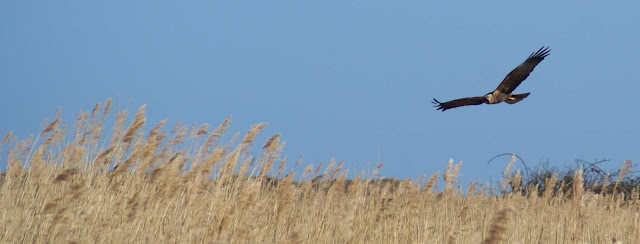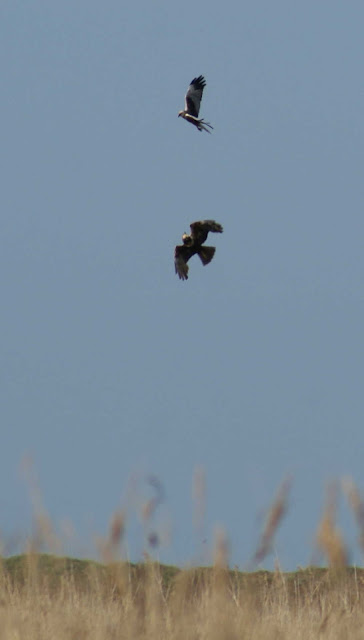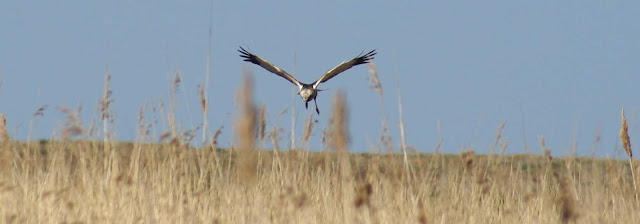Over the Spring months I have enjoyed watching the Marsh Harriers at The Norfolk Wildlife Trust near Cley. Every year there are breeding pairs at Cley which feed on the small mammals and young wild fowl chicks that abound in these salt and fresh water marshes.
We are only about 10 miles from the nature reserve which means I can pop up there any time in the day to watch these fascinating raptors.
 |
| The Male |
Whilst there are really good bird hides available the best way to watch them is simply from the paths through the reeds. Sadly my camera is getting old, a little like me, as it struggles to focus on things that are far away, near, oh and right in front of it. So whilst these pictures are not the cracking ones you'll see on Google Images I am still really pleased with them.
 |
| The Female |
Most of our Harriers migrate to Africa each winter but I believe the ones in the RSPB reserve in Elmley near Sheerness in Kent are resident all year.
They nest in amongst the reeds on the marsh and having established where the nest was I could watch them come and go.
Here the female is about to drop down into the reeds with a twig for the nest as she builds it up. I watched them for sometime collecting nesting material from the side of the lake and bringing them back to the nest site.

I also watched as they hunted but to my shame I have no photographs with any prey in their talons. Still they are feeding their young now and so I still have time to go back and try.
Here the male has his eyes on something tasty whilst below the female is making the strike.
The two of them would also play in the air with each other. Male Harriers like to drop their catches in midair as gifts for the partner to catch and they seemed to be playing this game but without the prey.
They were very acrobatic and more often than not the female would be beneath the male with her head twisted at 180 degrees looking up at him as in the photo below.
The V shape of the wings is a classic pose of a Marsh Harrier. The following are a few more pictures of this courtship 'play'.
Then they would breakaway from this play and go looking for lunch. Lunch ideally being one of the small duck, goose or waders chicks way below on the marsh. However it is not that easy and most parents put up a good fight to protect their young. The most determined of these are the seemingly delicate Avocetes whom in a one to one fight I would lay odds that the Harriers would win. The Avocetes however are tenacious in their drive to protect their fledglings so much so that they take the fight to the Harrier mobbing it continuously until it steps down and moves further along the marsh.
Once again an amazing site to watch and here are a few of my photos of the battles....
 |
| A sorte of three Avocetes mob a harrier in the late evening. |
 |
| You'd think that one beat of the Harriers wing and the Avocete would have been gone! |
 |
| Eventually they chase the Harrier off. |
However the Marsh Harrier strikes elsewhere where resistance is not so debilitating....
So there you have it my whistle stop tour of the Marsh Harriers at Cley. They are still there and will be until late September (probably) so if you can then come up and see them sometime ;)
8,979










No comments:
Post a Comment